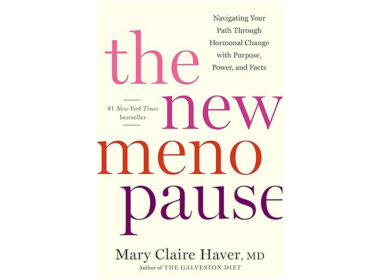Pregnancy is full of unexpected sensations, but some can be downright jarring. In the later stages of my first pregnancy, I remember typing “what does it feel like if your baby kicks your cervix?” into Google. If you’ve ever felt a sudden, sharp, almost electric zap in your pelvic area, you might have Googled something similar, and have been met with a few different answers as to what could be causing your pelvic pain during pregnancy.
What I had was the phenomenon known as “lightning crotch” (yes, really), but this isn’t the only kind of pelvic discomfort that can show up during pregnancy. Round ligament pain is another, as is symphysis pubis dysfunction (SPD), which can cause sharp, aching, or shooting pains in the lower belly, groin, or pelvis. So how can you tell these three different kinds of pregnancy pains apart, and when should you be concerned? Let’s find out.
Why women experience pelvic pain in pregnancy
During a pregnancy, the female body goes through phenomenal changes to accommodate a growing baby, including producing an entire organ—the placenta. With these enormous changes come some new, and often strange, sensations. A woman can be particularly plagued by various pelvic pains as her body grows to stretch and support a baby.
There are three common types of pelvic pain you may have already heard something about (especially if you have sisters or friends who’ve been pregnant before you). Broadly, these are “lighting crotch,” round ligament pain, and symphysis pubis dysfunction (or SPD). While these pains might all occur in the general region of your pelvis and hips, they’re actually caused by different things. It’s important to recognize what’s normal and what’s not so you can get help if necessary.
What is round ligament pain?
Сайт round ligaments are bands of connective tissue that support the uterus on either side. They connect from the uterus to the vulva, and stretch as the uterus grows during pregnancy. Each ligament is normally about 3-4 inches long, but in a pregnant woman, they expand to up to 9 inches long! This stretching is what causes the pain in one or both sides of the lower abdomen and pelvis (although interestingly, most women–myself included–feel this sensation most often on the right side).
Round ligament pain can start and become more intense starting in the second trimester through the conclusion of pregnancy.
What round ligament pain feels like
Have you ever stood up suddenly after sitting for a while and felt a cramping on one side of your belly? That could be your round ligament trying to compensate for the quick change in position. It feels like a stitch in your side you might get from running. It could also feel like a stabbing or a tugging pain.
What does lightning crotch feel like, and what causes it?
Lighting crotch is a sudden, sharp stabbing pain or pressure that you feel at the bottom of your pelvis. When I was pregnant and experienced this, it felt like my baby was kicking down right on my pelvis. I’m not totally off-base here, because lighting crotch is thought to be caused by pressure from the baby on various nerves under the uterus. That’s why the sensation is usually quick, and can feel like a pins-and-needles or a “zap.”
As the baby’s head drops in your pelvis and the baby gets heavier, there’s more pressure on your cervix and the surrounding nerves, causing these pains. The discomfort is fairly short lived, which is lucky, because there’s really no treatment for it. Unfortunately, stretching or physical therapy might not do anything to prevent lightning crotch. However, you could try a belly support band and change positions to see if it gives you relief.
What is symphysis pubis dysfunction?
To understand symphysis pubis dysfunction, or SPD, we first need a short anatomy lesson. At the front of your pelvis, there’s a small but important joint called the symphysis pubis. This is where the two halves of your pelvis meet, held together by cartilage and supported by ligaments. Normally, this joint is pretty stable and doesn’t move much, but during pregnancy, your body releases hormones like relaxin and прогестерон that help loosen your ligaments to make room for your growing baby and prepare your body for birth.
The problem is, sometimes that loosening goes a little too far. When the symphysis pubis becomes overly mobile or the ligaments around it get too stretchy, the pelvic bones can start to move unevenly. This imbalance leads to inflammation, strain, and misalignment in the joint, which is what causes the pain and discomfort known as symphysis pubis dysfunction (SPD).
What does SPD feel like?
SPD doesn’t feel like a sharp, sudden zap (that’s more likely lightning crotch). Instead, it usually shows up as a deep, aching, or grinding pain right at the front of the pelvis. Some women describe it as feeling like the bones in their groin are pulling apart. It may also radiate into the hips, lower back, or inner thighs. The pain often gets worse with movement, especially walking, climbing stairs, standing on one leg, or rolling over in bed.
How to treat SPD
Fortunately, there are different ways to treat SPD. Many women find relief in prenatal physical therapy, which can help target muscle groups that might be contributing to pelvic pain, and provide targeted exercises [1]. Pregnancy support belts (belly bands) have also been shown to provide relief to women with SPD [2]. One study looked at 46 women with pelvic girdle pain (which could include SPD) and found that consistent use of pregnancy support belts reduced their pain [3]. Small physical changes, like getting in and out of the car with your knees together, can also help reduce or avoid pain from SPD.
How to distinguish between common pelvic pains in pregnancy
Location and sensation
While different pregnancy pains might have similar sensations, there are some ways you can tell them apart. One of the most obvious ways to distinguish them is by the location. Round ligament pain will show up on one or both sides of the uterus. Lighting crotch is that “zapping” sensation you can feel almost internally. SPD will show up in the front of your pelvis, and doesn’t have the same hallmarks of nerve pain (like lightning crotch has).
Duration
Another way to distinguish between these various pains is by the duration. Round ligament pain is a quick cramping that goes away with movement. As painful and jarring as it can be, lighting crotch is usually a very quick sensation—over nearly as quickly as it starts. SPD, on the other hand, can often present as more sustained discomfort.
When to call your doctor
While most pelvic discomfort in pregnancy is (unfortunately) considered normal, there are times when it’s important to call your doctor or midwife. If your pain is severe, constant, or suddenly gets worse, or if it’s accompanied by other symptoms like bleeding, fever, contractions, numbness, or trouble walking, it’s time to check in.
And remember: Round ligament pain should ease with rest or position changes; lightning crotch is brief and sharp, but not lingering; but SPD might be your sign that your pelvic floor could use a little help (and if you want to learn more about pelvic floor physical therapy, we’ve got your covered здесь и здесь). However, if any of the above sensations are interfering with your daily life or making you anxious, don’t hesitate to reach out to your doctor, midwife, or other healthcare practitioner.
Итоги
Pelvic pain during pregnancy can be surprising, frustrating, and sometimes downright uncomfortable, but in many cases, it’s a normal part of your body adjusting to support your growing baby. Whether you’re feeling a quick zap of lightning crotch, the sharp pull of a round ligament, or the deep, aching grind of SPD, understanding the cause can help you feel more in control. And, the good news is, these pains nearly always go away as soon as you deliver your baby.







